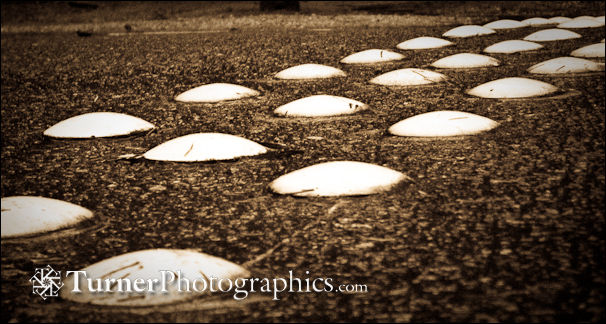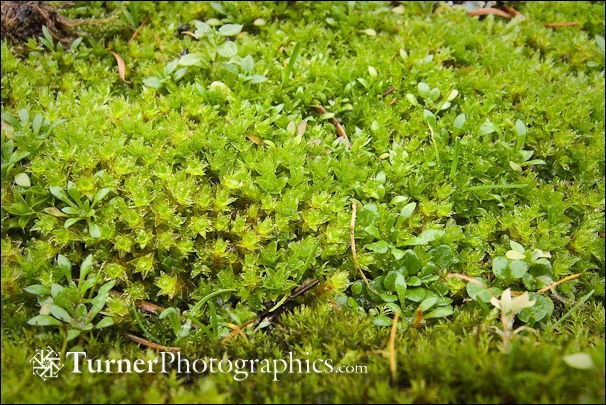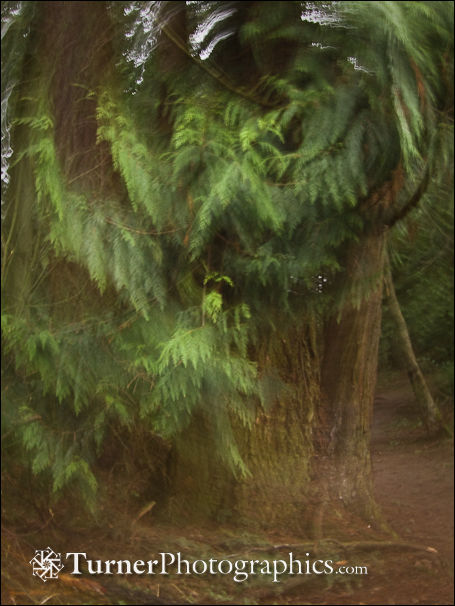Rainy Walk

It’s that dark and rainy time of year, but that’s no reason to stay inside. My friend Jennifer Titus created a nice word picture of road turtles on her Facebook page a day or two ago, so that got me to thinking about them. This afternoon I headed up to Cornwall Park for a quick loop around. These turtles are guarding the crosswalk on the trail where I enter the park. They don’t seem to mind getting run over.

Before I got to the park I noticed this refractive pattern in the water draining off Cornwall Avenue. It’s caused by the thin layer of oil carried in the water. I guess it’s the beauty found in pollution from the cars streaming by. I don’t know whether I got any funny looks from drivers as I knelt at the roadside to frame up the shot. I’ve gotten beyond caring much about what passers-by think while I’m creating a photo.
 Just a block up the street from us is the First Plymouth Congregational Church. This patch of heather has been part of their garden for about as long as we’ve been in Bellingham — 19 years. It’s come into full bloom in the last week or so and will continue to be in bloom for at least a couple of months.
Just a block up the street from us is the First Plymouth Congregational Church. This patch of heather has been part of their garden for about as long as we’ve been in Bellingham — 19 years. It’s come into full bloom in the last week or so and will continue to be in bloom for at least a couple of months.
The grass is ‘Karl Foerster’ Feather Reed Grass. It really looks its best in late afternoon sun in October, but even on a very dull day in January is provides a lot of interest to the landscape.
This is a time of year when gardeners are planning ahead, thinking of spring and all the new stuff we can plant. But a couple of my garden blogging colleagues have mentioned the beauty of winter gardens this week. Saxon Holt in Gardening Gone Wild talks about patterns of bare branches. Andy Wright in Winter Interest in the Landscape talks about using conifers for year-round interest.
In our area lots of people grow winter-blooming heathers and leave their grasses standing tall.

Sometimes it’s not even the plants themselves that provide the winter interest. These holly berries had fallen to the ground in Gossage Plaza park. Their bright red color and pseudorandom arrangement caught my eye.

I was scanning the side of the road down into Cornwall Park looking for the first blossoms of Draba verna when I spied this very nice patch of moss. The Draba will be starting to bloom real soon now, but on this day the moss was more interesting. I have no idea what species these are.
 My favorite trail through the park has many old trees. They may not be true old-growth, but they’re certainly approaching it in size and majesty. Mostly they’re Douglas-firs and Western Red-cedars. This one is a cedar.
My favorite trail through the park has many old trees. They may not be true old-growth, but they’re certainly approaching it in size and majesty. Mostly they’re Douglas-firs and Western Red-cedars. This one is a cedar.
I thought it might be fun to move the camera during the shot. I set the ISO to 100 and set the f/stop to about 5.6 so I ended up with an exposure of about one second. That gave me enough time to gently rotate the camera while the shutter was open. I started with the camera vertical, held that position briefly so the tree trunk would be a little more visible, then rotated the camera. I made a handful of exposures because there’s certainly an element of luck in creating this kind of photo. This was the most successful of the series.
All of the photos this afternoon were made with my pocket camera, a Canon S70 that I’ve had since 2005. I thought about just carrying my iPhone, but it was busy streaming Natalie McMaster on Pandora and I wanted a little more control than I could get with the phone camera.
I spent most of my day selecting photos for garden magazines and planning for a wildflowers software application. Way too much time on my butt staring at a screen. Getting out and playing around with some images in the woods and along the street made for a nice break. Make sure you get out and play almost every day. It’s good for the soul.

